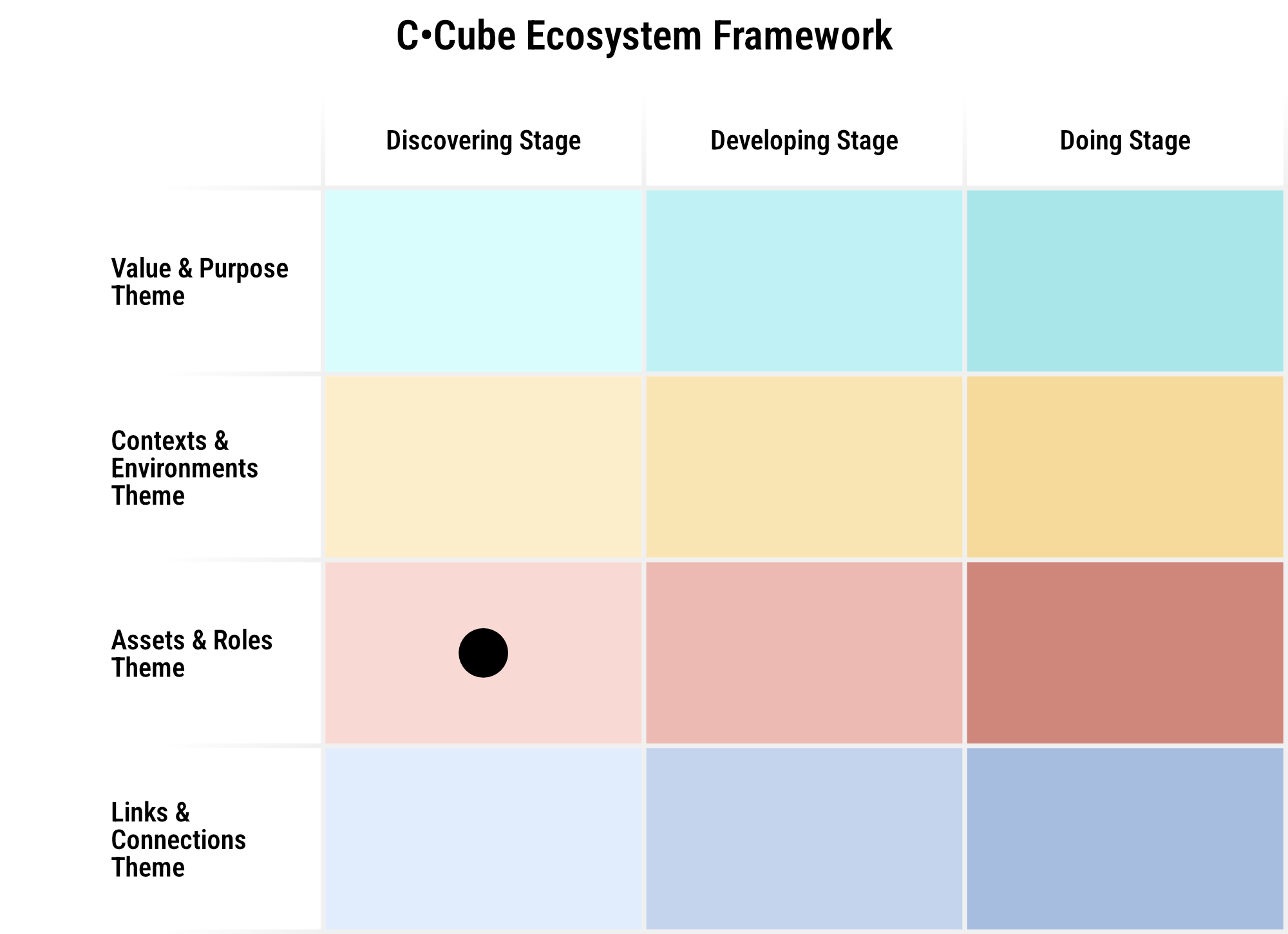Inventory and Map
Understanding Roles and Resources
Assets & Roles theme and the Discovering stage
Situated at the intersection of the Assets & Roles theme and the Discovering stage, “Inventory and Map” is foundational in entrepreneurial ecosystem development. This topic involves a comprehensive assessment of the roles, assets, and resources that comprise the ecosystem, providing a clear picture of its strengths and opportunities.
When ecosystem stakeholders and partners, including colleges and universities, work together to inventory and map the ecosystem, they tackle some fundamental aspects of the ecosystem:
- Resource Identification: Inventorying and mapping help ecosystem builders identify and catalog the critical resources within the ecosystem, including human capital, physical infrastructure, intellectual property, funding sources, and networks.
- Role Clarity: Inventorying and mapping clarify the roles and responsibilities of ecosystem participants, ensuring that each understands its contribution to the ecosystem’s success. It promotes effective collaboration and alignment.
- Gap Analysis: By conducting inventory and mapping exercises, builders can identify gaps in the ecosystem—areas where additional resources, expertise, or roles may be needed to support entrepreneurial activities.


Considerations
As ecosystem-building partners inventory and map, consider the following:
- Stakeholder Engagement: Engage with a diverse range of stakeholders, including entrepreneurs, investors, support organizations, educational institutions, and government agencies, to gather comprehensive data.
- Data Collection Methods: Employ a variety of data collection methods, such as surveys, interviews, and research, to gather information about roles, assets, and resources within the ecosystem.
- Technology, Digital Platforms, and Tools: Use technology and data management tools to streamline the inventory and mapping process, and to store and manage inventory and mapping data. Make this information accessible to ecosystem stakeholders for reference and collaboration, and have a strategy for keeping it up to date.
- Ecosystem Surveys: Conduct surveys or assessments to collect data on the roles and assets present within the ecosystem. Ensure that survey questions are well-structured and capture relevant information.
- Collaborative Workshops: Organize collaborative workshops or focus groups where ecosystem participants can collectively identify and map roles and assets. These sessions can promote a shared understanding of the ecosystem’s dynamics.
- Gap Analysis: Once the inventory and mapping are complete, perform a gap analysis to identify areas where the ecosystem may be lacking. Develop strategies to address these gaps, whether through capacity building, resource mobilization, or collaboration.
Conversation Guides
Use these conversation guides to begin the inventory and mapping process:

